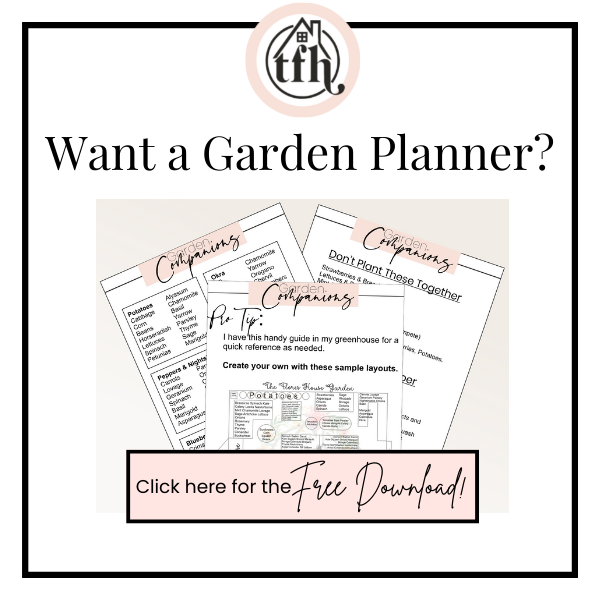
Grab our Free Garden Planning PDF to get started with designing your garden. You will also get a free guide to companion plants!

Grab our Free Garden Planning PDF to get started with designing your garden. You will also get a free guide to companion plants!
Read Next: Adorable Kitchen Window Gardens
Self-Watering Planters
Plow & Hearth
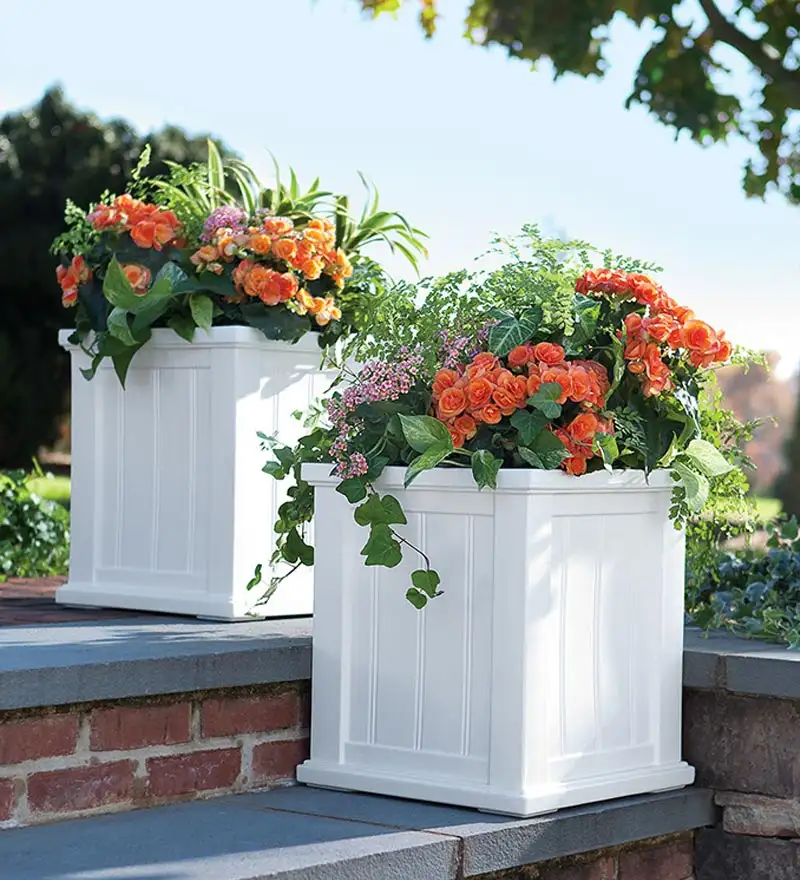
The size and depth of planters are crucial factors that directly influence vegetable growth and development.
Choosing an appropriate planter size is vital for providing enough space for root expansion and nutrient absorption.
As a general guideline, larger and deeper planters are suitable for vegetables with extensive root systems, such as tomatoes or cucumbers.
Smaller planters can be used for shallow-rooted vegetables like herbs or lettuce. Consider the specific recommendations for each vegetable regarding root depth requirements and select a planter size that accommodates those needs.
Additionally, the size of the container affects water and nutrient retention. Larger planters can hold more soil, providing better moisture and nutrient availability for the plants.
Remember to strike a balance between the available space you have and the requirements of the vegetables you wish to grow.
The soil quality in your vegetable planters is crucial for healthy plant growth. Opt for high-quality potting soil or create a custom mix using compost and organic materials.
Good soil provides adequate drainage, retains moisture, and supplies essential nutrients to the plants.
Different vegetables may have specific soil requirements, such as acidic soil for blueberries or well-draining soil for root vegetables.
Research the specific needs of your chosen vegetables and prepare the soil accordingly. Fertilizers or organic amendments can further enhance plant growth and productivity.
Choose the best fertilizers suitable for vegetables and follow the recommended application rates. Organic amendments like compost or worm castings can enrich the soil and improve its structure, promoting optimal root development and nutrient absorption.
Proper watering is essential for the success of your vegetable container garden. The frequency and volume of watering depend on various factors, including plant type, planter size, weather conditions, and soil moisture levels.
Monitor the soil moisture regularly and water when the top inch of soil feels dry. Avoid over-watering, as it can lead to waterlogged soil and root rot.
On the other hand, underwatering can cause stunted growth and nutrient deficiencies. Consider using irrigation systems such as drip irrigation or self-watering containers to provide consistent and efficient moisture to your plants.
Watering wands can help deliver water directly to the root zone, minimizing water waste. Observe your plants for signs of moisture stress or excess and adjust your watering routine accordingly to ensure healthy and thriving vegetable plants.
Sunlight is a critical factor in vegetable growth and productivity. Most vegetables require full sun, which means they need at least six to eight hours of direct sunlight daily.
Some vegetables, such as leafy greens, tolerate partial shade. Assess the available space and choose a location that receives the appropriate amount of sunlight for your chosen vegetables.
South-facing areas usually receive the most sunlight, but east or west-facing locations can also work depending on the intensity and duration of sunlight.
Consider the orientation of your planters and use reflective surfaces or mirrors to maximize sunlight exposure. If sunlight is limited, consider using artificial grow lights to supplement the natural light.
By optimizing sunlight exposure, you provide your vegetable plants with the energy they need for photosynthesis, growth, and, ultimately, a bountiful harvest.
Pests and diseases can challenge vegetable plants, even in container gardens. Implement preventive measures to minimize the risk of infestation and disease development. Regularly inspect your plants for signs of pests such as aphids, caterpillars, or mites.
Encourage natural predators like ladybugs or lacewings to control pest populations. Companion planting can also be effective in deterring pests and attracting beneficial insects.
Organic pest control methods such as neem oil, insecticidal soaps, or homemade remedies manage pest issues.
Be vigilant for signs of diseases such as powdery mildew or fungal infections. Remove infected plant parts promptly and consider using disease-resistant varieties.
Maintaining good hygiene, providing proper air circulation, and avoiding over-crowding of plants can also help prevent the spread of diseases.
Seasonal variations play a significant role in vegetable container gardening. Portable or movable planters offer flexibility, allowing you to adjust the position of your plants as the seasons change.
In colder climates, you can extend the growing season by moving planters to warmer areas or using protective coverings during frosty nights. Check out our DIY Greenhouse and Winter Veggies Guide.
Conversely, relocating planters to shaded areas or providing shade cloth in hot climates can help protect plants from excessive heat and sun.
Consider the specific requirements of your vegetables regarding temperature and climate and adapt your container garden accordingly. By being mindful of seasonal considerations and making necessary adjustments, you can maximize the growth potential of your vegetable plants throughout the year.
Join our Facebook and Instagram Communities for more garden inspiration!

Grab our Free Garden Planning PDF to get started with designing your garden. You will also get a free guide to companion plants!
Read Next: Adorable Kitchen Window Gardens
Discover the ultimate guide to selecting the perfect vegetable garden planters for growing your veggies! From choosing the right size and material to preventing pests, this blog post covers everything you need to know. Unlock the secrets of successful vegetable container gardening and enjoy a bountiful harvest this year!
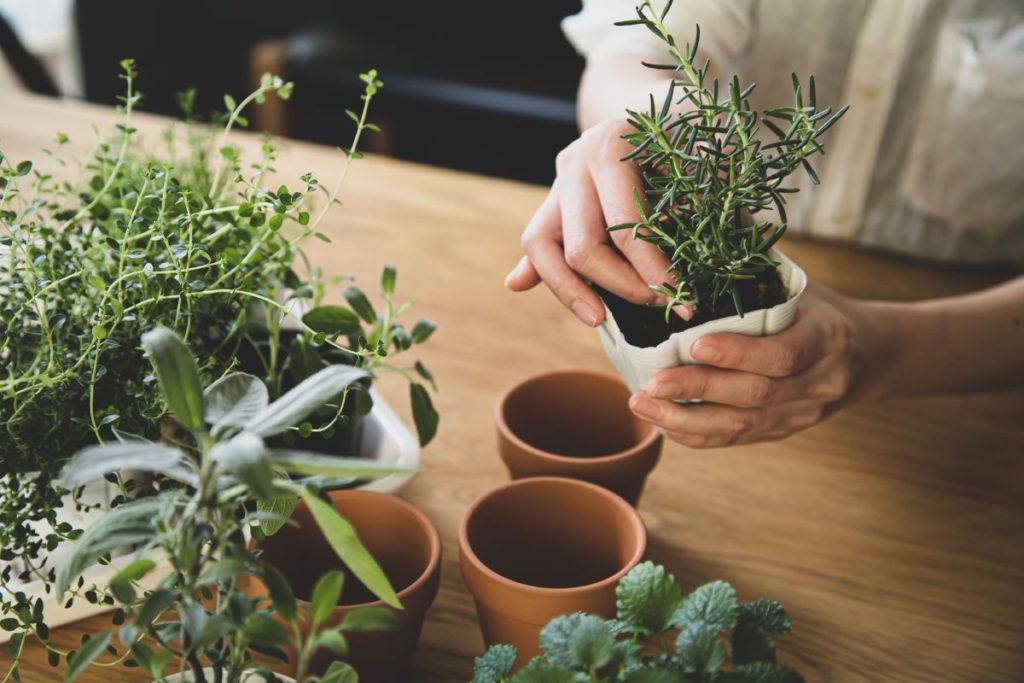
Vegetable container gardening has emerged as a game-changer for urban dwellers, space-constrained homes, and those without access to traditional gardens.
It opens possibilities, enabling individuals to cultivate fresh and organic vegetables regardless of limited space.
With planters, the concept of growing vegetables transcends the boundaries of traditional gardening, offering a versatile and convenient alternative.
Whether you have a tiny balcony, a sunny patio, or a windowsill, vegetable container gardening empowers you to embrace your green thumb and savor the joys of homegrown produce.
Containers in the garden are a true marvel. They bring life and color to any space, transforming the mundane into a breathtaking sight.
Picture this: a lush container garden deck bursting with vibrant greens, cheerful blooms, and various vegetables sprouting joyfully. Who needs a sprawling garden when you can create an enchanting oasis right on your patio?
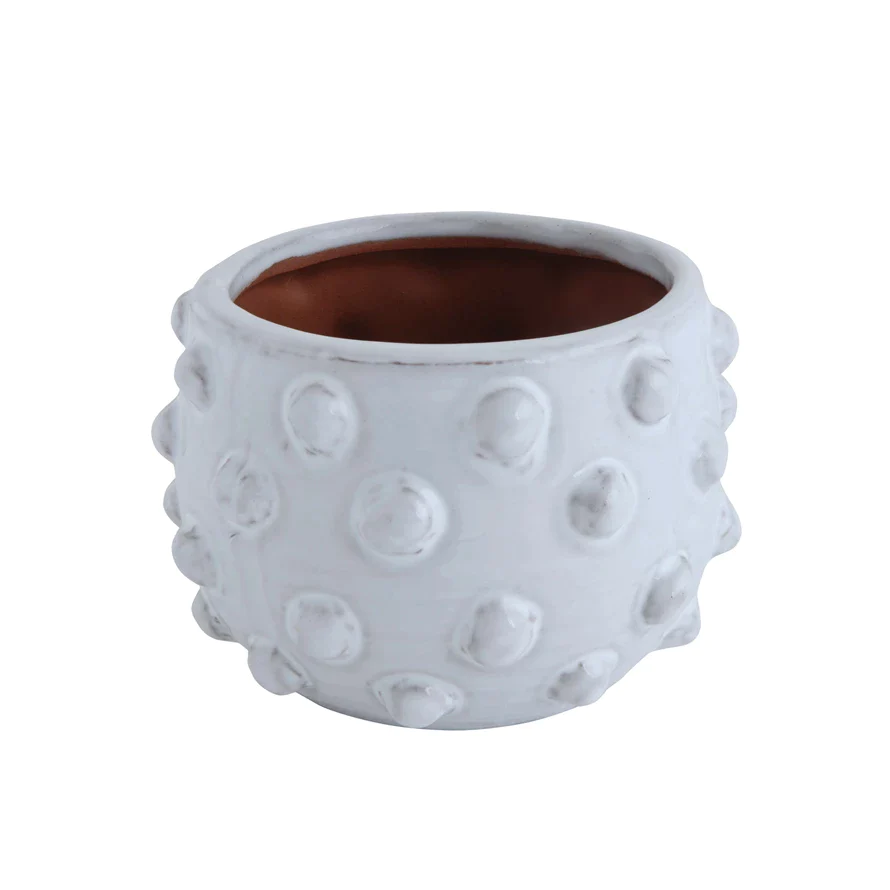
White Bubble Terracotta Planter
Ferry-Morse
Regarding vegetable gardening, there is a wide array of planter options, each with unique features and benefits.
Raised beds are famous for their versatility and accessibility, providing ample space for root growth and easy maintenance. Read this post next: Tips for Buying Raised Garden Beds.
Pots offer flexibility and portability, allowing you to rearrange your vegetable garden as needed.
Fabric bags are lightweight, portable, and provide excellent drainage for healthy root development.
Window boxes add charm and fit perfectly on ledges or railings, bringing greenery to any urban space.
Hanging baskets are ideal for trailing plants and can be suspended to maximize vertical space.
Vertical planters maximize space by utilizing walls or structures, allowing for an impressive vertical garden.
Consider the characteristics and requirements of your chosen vegetables to determine the most suitable planter type for your needs.
Regarding vegetable container gardening, the options for planters are delightfully diverse. From raised beds to pots, fabric bags to window boxes, hanging baskets to vertical planters, there’s a perfect match for every gardener’s style and space.
Beyond their adorable appearance, cute vegetable garden planters provide many benefits. They offer better soil quality and drainage control, prevent soil-borne diseases, and minimize weed growth.
Additionally, container gardening allows for easy mobility, enabling you to optimize sunlight exposure throughout the day. It’s the perfect solution for urban gardeners or those with limited outdoor space.
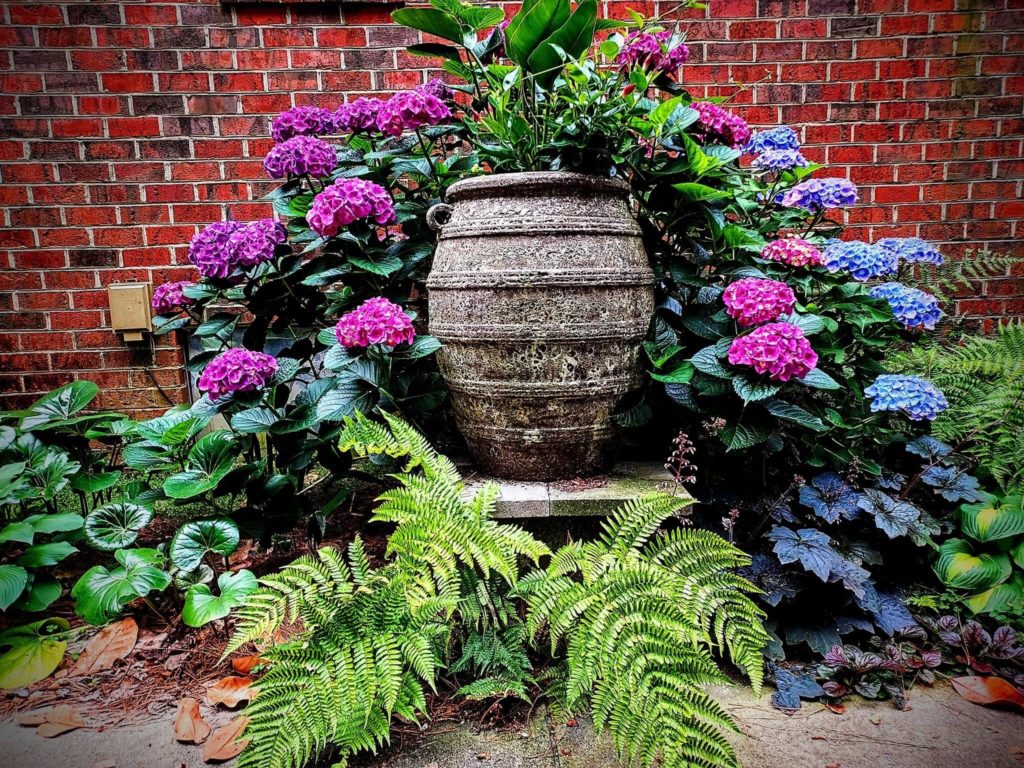
Drumroll, please! There’s no one-size-fits-all answer to finding the best container for vegetables to grow.
Each plant has its preferences, so consider factors such as root depth, water requirements, and space needed.
Depending on your needs, clay pots, fabric bags, or plastic containers are all viable options. Experiment, have fun, and watch your veggies flourish!
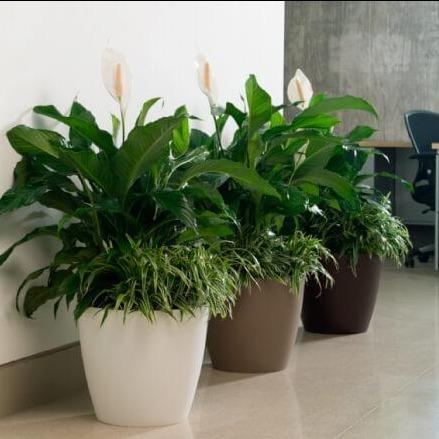
Large Resin Planters
Garden Goods Direct
Lightweight Stone-Look Planters
Polystone
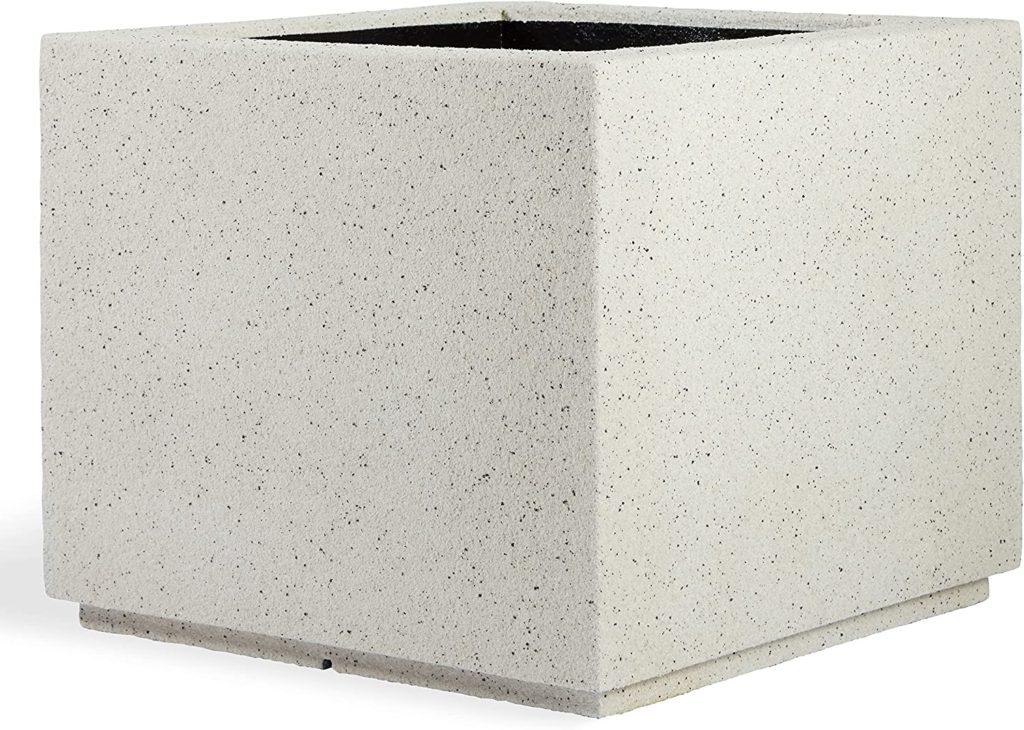
Let’s get our hands dirty and talk about container garden planting. When selecting your containers, you don’t need to break the bank. Plenty of cheap containers to grow vegetables will suit your needs perfectly.
Look for recycled items like old buckets, wooden crates, or discarded furniture like dresser drawers. Creativity knows no bounds!
Size matters, especially when it comes to your veggie containers. To ensure your plants thrive, consult the vegetable container size chart.
This handy tool will guide you in choosing the appropriate container for each vegetable variety, ensuring they have enough space to spread their roots and grow happily. Remember, a well-suited container leads to a bountiful harvest!
| Vegetable | Recommended Planter Size |
|---|---|
| Radishes | 1-gallon or larger container |
| Herbs (e.g., basil, parsley) | 1-gallon or larger container |
| Spinach | 2-gallon or larger container |
| Lettuce | 2-gallon or larger container |
| Carrots | 2-gallon or larger container |
| Onions | 2-gallon or larger container |
| Peas | 2-gallon or larger container |
| Kale | 3-gallon or larger container |
| Beets | 3-gallon or larger container |
| Peppers | 3-gallon or larger container |
| Cucumbers | 5-gallon or larger container |
| Tomatoes | 5-gallon or larger container |
| Eggplant | 5-gallon or larger container |
| Beans | 5-gallon or larger container |
| Zucchini | 7-gallon or larger container |
Remember that plants like tomatoes grow deep roots and need deep containers, while plants like squash and zucchini tend to spread out, needing more expansive growing spaces.
The choice of planter material plays a significant role in vegetable gardening.
Plastic planters are lightweight, affordable, and offer good water retention.
Terracotta planters are porous, allowing for better airflow to the roots but requiring more frequent watering.
Wooden planters provide insulation and a natural aesthetic, although they may deteriorate over time due to moisture exposure.
Metal planters are durable and retain heat, making them suitable for cooler climates.
Fabric planters promote excellent drainage and root aeration, preventing waterlogged soil and root rot. Proper drainage is essential in all planters to ensure excess water can escape, preventing soggy soil conditions.
Remember to choose a planter material that suits your climate, gardening goals, and aesthetic preferences while considering its impact on water retention, insulation, and long-term durability.
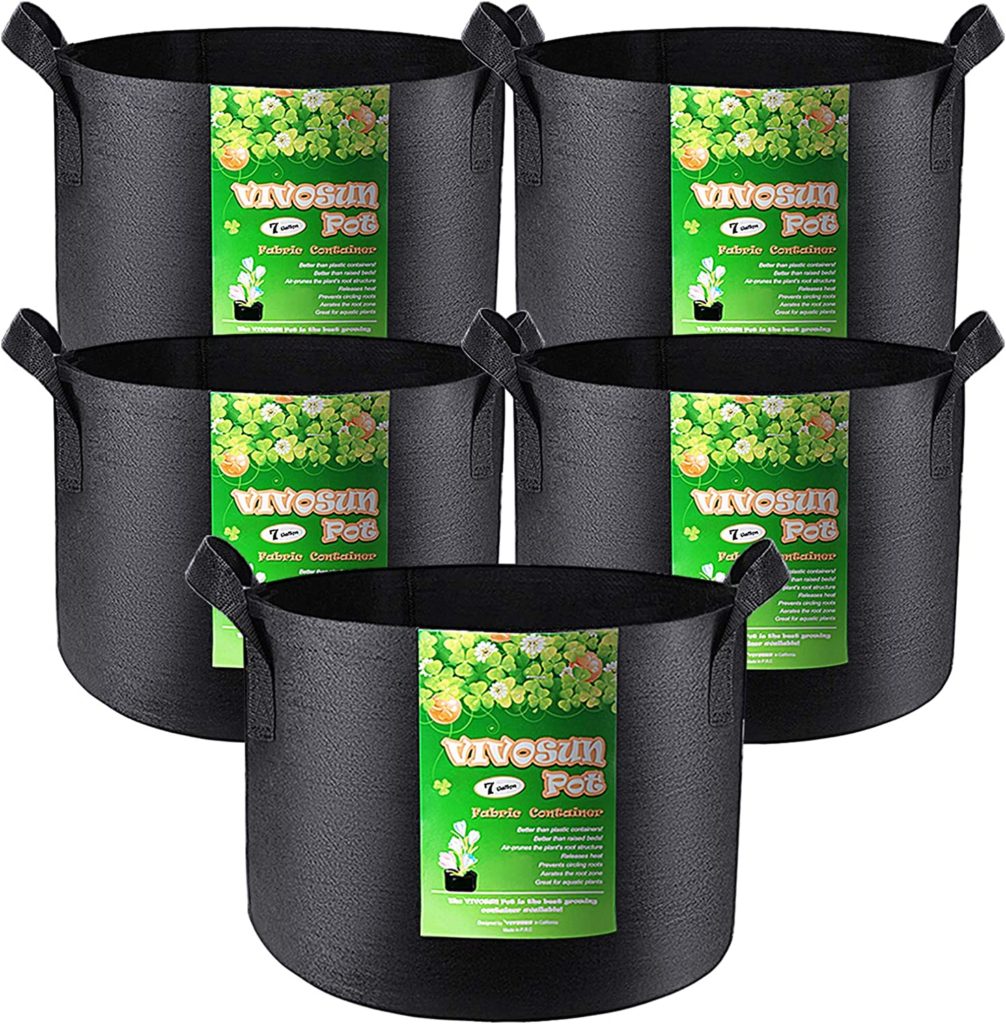
Fabric Garden Bags
Vivosun
Self-Watering Planters
Plow & Hearth

The size and depth of planters are crucial factors that directly influence vegetable growth and development.
Choosing an appropriate planter size is vital for providing enough space for root expansion and nutrient absorption.
As a general guideline, larger and deeper planters are suitable for vegetables with extensive root systems, such as tomatoes or cucumbers.
Smaller planters can be used for shallow-rooted vegetables like herbs or lettuce. Consider the specific recommendations for each vegetable regarding root depth requirements and select a planter size that accommodates those needs.
Additionally, the size of the container affects water and nutrient retention. Larger planters can hold more soil, providing better moisture and nutrient availability for the plants.
Remember to strike a balance between the available space you have and the requirements of the vegetables you wish to grow.
The soil quality in your vegetable planters is crucial for healthy plant growth. Opt for high-quality potting soil or create a custom mix using compost and organic materials.
Good soil provides adequate drainage, retains moisture, and supplies essential nutrients to the plants.
Different vegetables may have specific soil requirements, such as acidic soil for blueberries or well-draining soil for root vegetables.
Research the specific needs of your chosen vegetables and prepare the soil accordingly. Fertilizers or organic amendments can further enhance plant growth and productivity.
Choose the best fertilizers suitable for vegetables and follow the recommended application rates. Organic amendments like compost or worm castings can enrich the soil and improve its structure, promoting optimal root development and nutrient absorption.
Proper watering is essential for the success of your vegetable container garden. The frequency and volume of watering depend on various factors, including plant type, planter size, weather conditions, and soil moisture levels.
Monitor the soil moisture regularly and water when the top inch of soil feels dry. Avoid over-watering, as it can lead to waterlogged soil and root rot.
On the other hand, underwatering can cause stunted growth and nutrient deficiencies. Consider using irrigation systems such as drip irrigation or self-watering containers to provide consistent and efficient moisture to your plants.
Watering wands can help deliver water directly to the root zone, minimizing water waste. Observe your plants for signs of moisture stress or excess and adjust your watering routine accordingly to ensure healthy and thriving vegetable plants.
Sunlight is a critical factor in vegetable growth and productivity. Most vegetables require full sun, which means they need at least six to eight hours of direct sunlight daily.
Some vegetables, such as leafy greens, tolerate partial shade. Assess the available space and choose a location that receives the appropriate amount of sunlight for your chosen vegetables.
South-facing areas usually receive the most sunlight, but east or west-facing locations can also work depending on the intensity and duration of sunlight.
Consider the orientation of your planters and use reflective surfaces or mirrors to maximize sunlight exposure. If sunlight is limited, consider using artificial grow lights to supplement the natural light.
By optimizing sunlight exposure, you provide your vegetable plants with the energy they need for photosynthesis, growth, and, ultimately, a bountiful harvest.
Pests and diseases can challenge vegetable plants, even in container gardens. Implement preventive measures to minimize the risk of infestation and disease development. Regularly inspect your plants for signs of pests such as aphids, caterpillars, or mites.
Encourage natural predators like ladybugs or lacewings to control pest populations. Companion planting can also be effective in deterring pests and attracting beneficial insects.
Organic pest control methods such as neem oil, insecticidal soaps, or homemade remedies manage pest issues.
Be vigilant for signs of diseases such as powdery mildew or fungal infections. Remove infected plant parts promptly and consider using disease-resistant varieties.
Maintaining good hygiene, providing proper air circulation, and avoiding over-crowding of plants can also help prevent the spread of diseases.
Seasonal variations play a significant role in vegetable container gardening. Portable or movable planters offer flexibility, allowing you to adjust the position of your plants as the seasons change.
In colder climates, you can extend the growing season by moving planters to warmer areas or using protective coverings during frosty nights. Check out our DIY Greenhouse and Winter Veggies Guide.
Conversely, relocating planters to shaded areas or providing shade cloth in hot climates can help protect plants from excessive heat and sun.
Consider the specific requirements of your vegetables regarding temperature and climate and adapt your container garden accordingly. By being mindful of seasonal considerations and making necessary adjustments, you can maximize the growth potential of your vegetable plants throughout the year.
Join our Facebook and Instagram Communities for more garden inspiration!

Grab our Free Garden Planning PDF to get started with designing your garden. You will also get a free guide to companion plants!
Read Next: Adorable Kitchen Window Gardens